If you could transform your downtown into a more vibrant district with a single strategy, which approach would you pick? The right answer for dozens of communities is…A Major Expansion of Higher Education.
This blog post represents what I believe to be the largest single collection of downtown revitalization examples driven by the expansion of universities. Special shout-out to all my LinkedIn friends who provided feedback on this topic :).
Below are 20 examples of cities enjoying the benefits of university expansions in their downtowns. For each example, you’ll see a brief description of how the the higher education expansion is translating into (or will lead to) new growth and energy in the downtown district. I’ve included a few existing universities that are expanding an existing downtown (or near downtown) campus, but most of the examples below represent entirely new investments where nothing existed before.
Downtown University Expansion #1:
Wake Forest University in downtown Winston-Salem
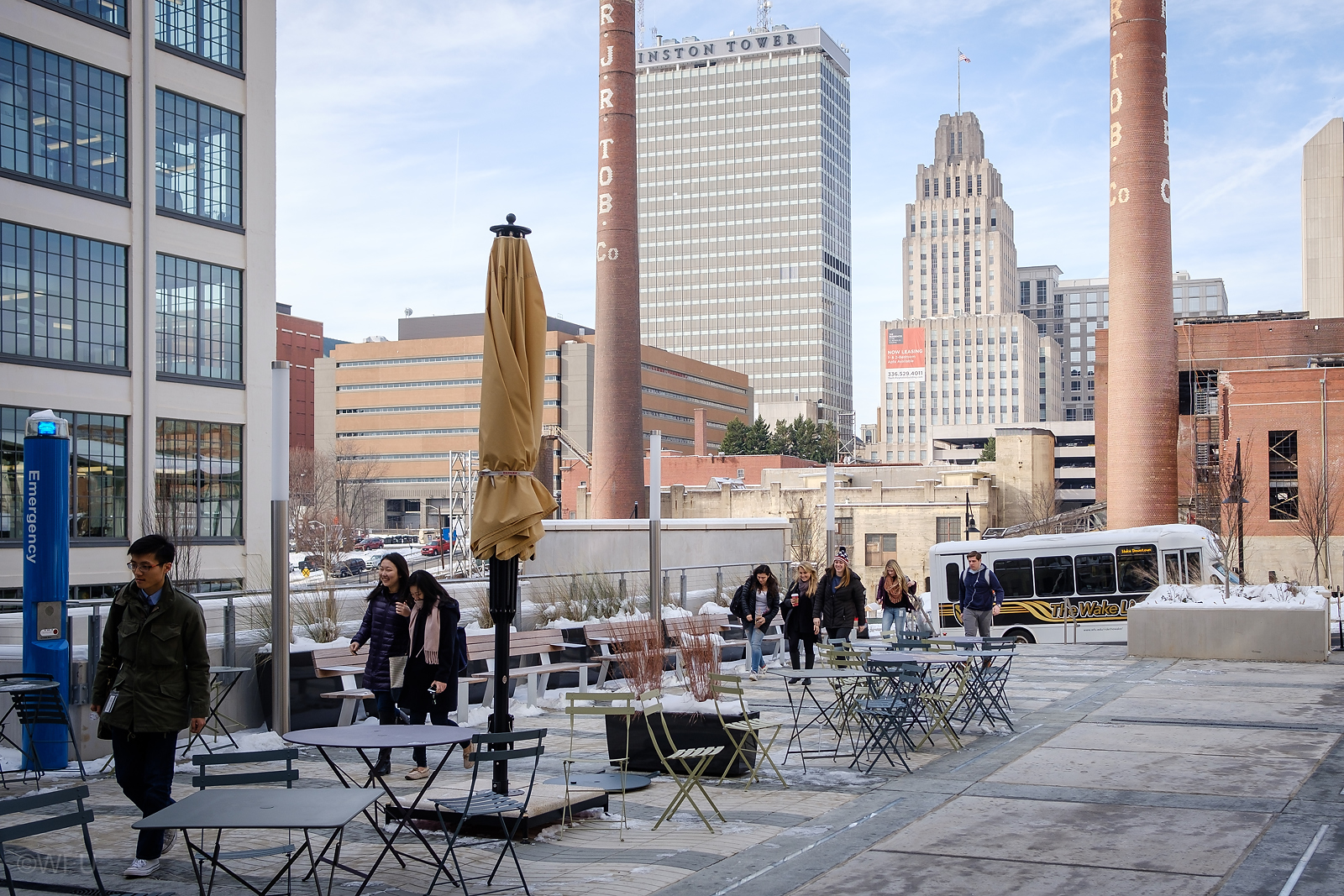
Image credit: Wake Forest University
Wake Downtown opened in 2017 with a 115,000 square-foot, STEM-focused urban campus in Winston-Salem’s emerging Innovation Quarter. The urban campus is housed in the old R.J. Reynolds tobacco building, which has been completely renovated and provides space for three new majors at the university: biochemistry and molecular biology, medicinal chemistry and drug discovery, and engineering. Wake Forest University President Nathan O. Hatch described Wake Downtown as an inflection point in the university’s trajectory, “When we look back at the major milestones in Wake Forest University’s history, I think this will rise to the top.”
Downtown University Expansion #2:
University of South Florida in Tampa
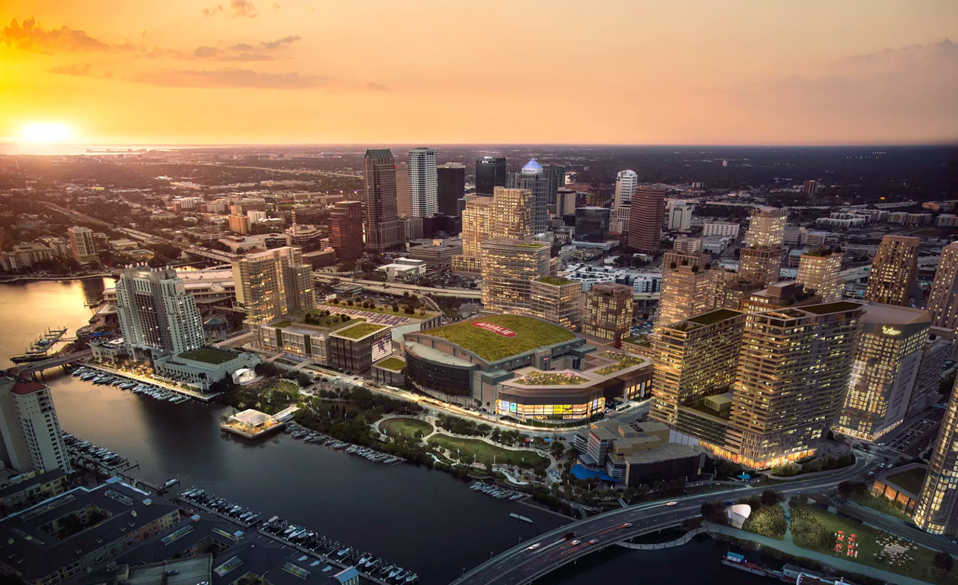
Image credit: Strategic Property Partners via Curbed
The USF Health Morsani College of Medicine and Heart Institute will open in 2019 in downtown Tampa. The new medical school will be an anchor as part of the Water Street Tampa district, planned as a dynamic urban mixed-use destination. Water Street is being touted as the world’s first “wellness district” and the new College of Medicine is an important part of that, with the 1,800 students, faculty, staff, and researchers that will occupy the facilities. Read more about the new urban neighborhood and its potential to transform Tampa’s economy as a medical/tech cluster (thanks in part to the new USF facilities) in Patrick Sisson’s article at Curbed.
Downtown University Expansion #3:
University of Washington – Tacoma
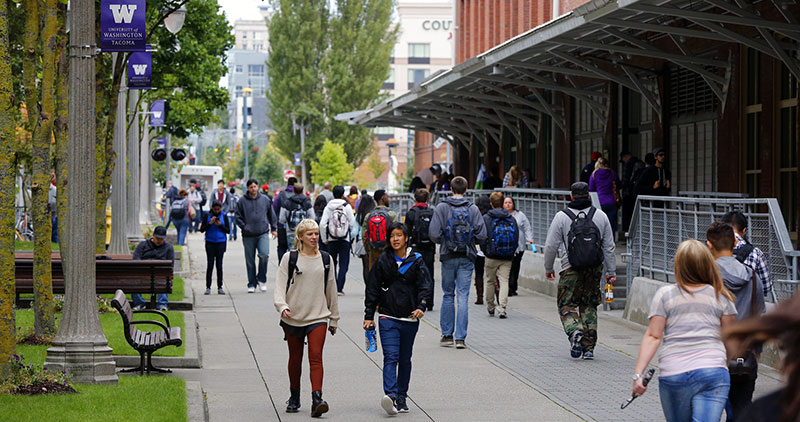
Image credit: University of Washington – Tacoma
Tacoma, Washington has struggled economically for decades, living under the shadow of neighboring Seattle. Malcolm Burnley at NextCity wrote this article detailing UW-Tacoma (UWT) and its influential role in the city’s downtown resurgence. When UWT opened in 1990, the State of Washington was trying to accomplish two major goals: 1) boost in-state enrollment; and 2) encourage economic development. By most accounts, UWT is now credited with leading a transformation of the city’s once depressed downtown. The question remaining is whether the university and the urban core can spark a broader citywide wave of prosperity.
Downtown University Expansion #4:
Arizona State University in Phoenix

Image credit: Arizona State University
Arizona State University’s downtown Phoenix campus is one of the most ambitious and strategic efforts to create a new higher education presence in a downtown. With an investment of nearly $225 million, the new campus will ultimately house 15,000 students and nearly 2,000 faculty and staff in the heart of Phoenix. ASU’s main campus in Tempe (a suburb just east of Phoenix) remains one of the country’s largest universities. But the university’s growing presence in Phoenix is the centerpiece of the city’s downtown revitalization efforts. This CityLab article by Jon Talton describes Phoenix’s recent progress toward urban transformation, driven largely by the new ASU campus.
Downtown University Expansion #5:
University of Central Florida in Orlando
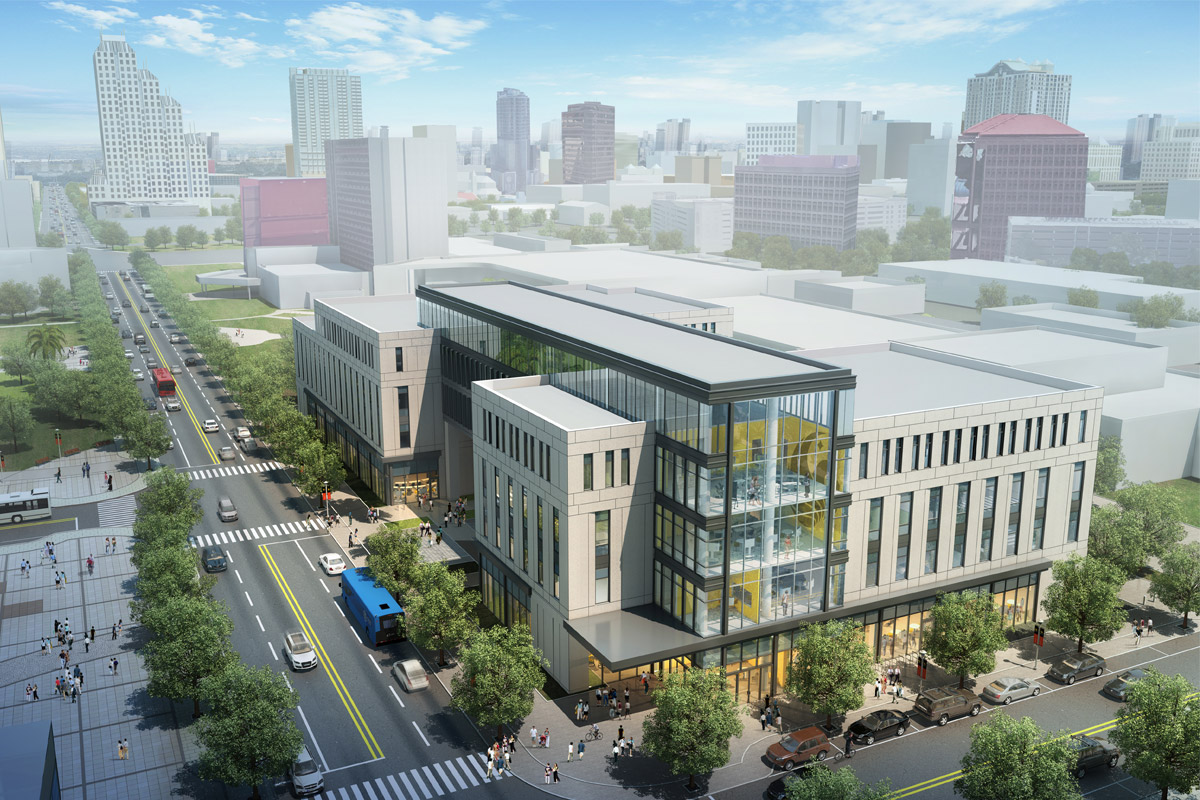
Image credit: University of Central Florida
UCF’s downtown Orlando campus is a perfect example to highlight after ASU in Phoenix. Not only because both universities already have huge flagship suburban campuses, but because UCF specifically used ASU as a model for their urban expansion. A few highlights about what makes this a great example: private sector funding was the major force behind the project, the inter-mingling of downtown employers with students (for internships especially) was a key consideration, and UCF partnered with the local community college to develop the campus. A recent article from UCF describes what the downtown campus will look like when it opens its doors to nearly 8,000 students in 2019.
Downtown University Expansion #6:
University at Buffalo medical campus
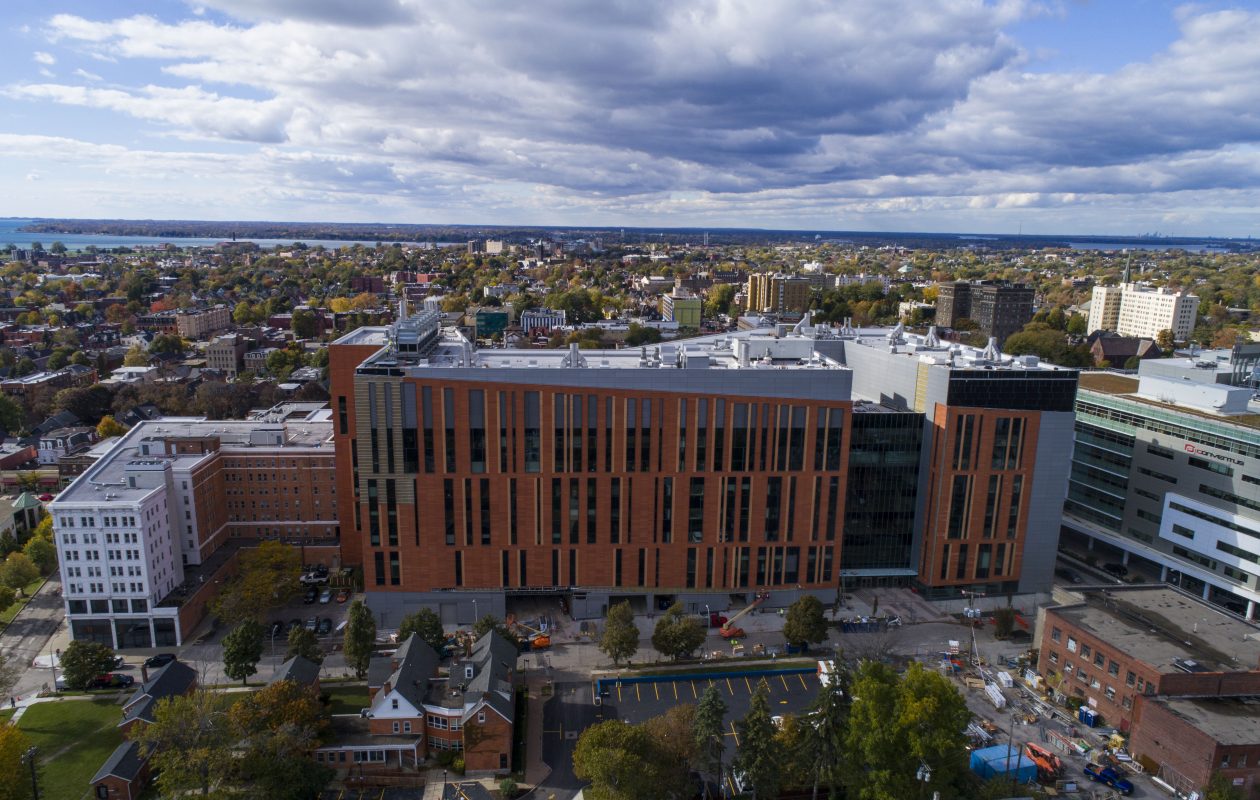
Image credit: Derek Gee, Buffalo News
Buffalo, despite being the largest city in New York State by population after NYC, has more in common with Midwestern “Rust Belt” cities like Cleveland, Detroit, and Milwaukee. The city’s downtown has a one of the largest collections of historic buildings in the US, but that urban core had fallen on hard times for more than a generation…Until recent years when the University at Buffalo launched the development of a new medical district anchored by the Jacobs School of Medicine and Biosciences. With hundreds of millions invested in new facilities, including major R&D centers such as the NYS Center of Excellence in Bioinformatics & Life Sciences, the university is credited with kickstarting a broader downtown renaissance. This article by Henry L. Davis of the Buffalo News describes the medical district’s role as a catalyst of urban revitalization. Davis is careful to point out, however, that “The campus isn’t a panacea. It won’t on its own solve all of the region’s big health care challenges, eliminate poverty in nearby neighborhoods, or suddenly make Buffalo the medical version of Silicon Valley. But it is steering the region’s medical culture and downtown life in the right direction.”
Downtown University Expansion #7:
Sacramento State University School of Public Affairs
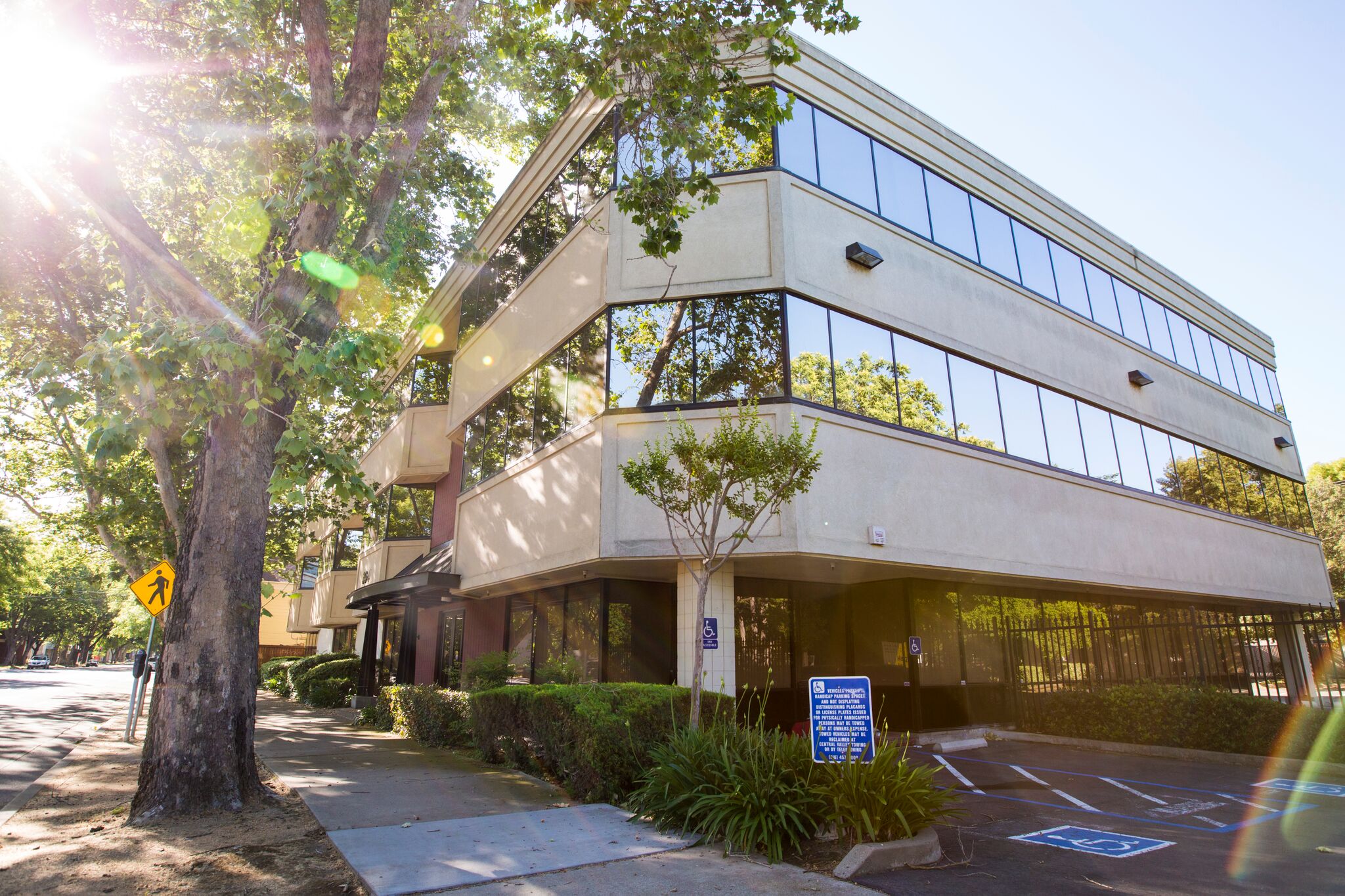
Image credit: Sacramento State University
Not all downtown revitalization efforts from universities must begin with a major new campus. Sacramento State University took a relatively modest, but important, step in 2016 by purchasing an existing 3-story, 30,000 square feet building in downtown Sacramento. The facility now houses the university’s School of Public Affairs and the downtown location decision has been lauded by local, state, and national political leaders as a critical symbolic move by the university that will help retain and attract students, in addition to playing a role in downtown’s continued enhancement. University President Robert S. Nelsen describes the new downtown location as a signal of the school’s status as “an anchor university,” the opposite of an ivory tower, with a focus on community engagement.
Downtown University Expansion #8:
UT-San Antonio downtown campus
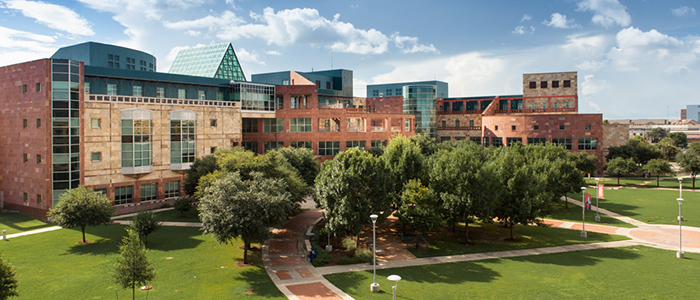
Image credit: UTSA
The near west side of San Antonio’s downtown has struggled with blight and disinvestment for many years. When UTSA’s downtown campus opened in 1997, one of its goals was to spark a revitalization in the surrounding area. The campus now serves a third of the university’s graduate students and houses UTSA Downtown Campus is home to the College of Architecture, Construction and Planning, the College of Public Policy and several departments of the College of Education and Human Development. In 2017, the university celebrated the downtown campus’s 20 year anniversary and highlighted the integral role UTSA has played in the creation of one of San Antonio’s up-and-coming urban districts. More recently, UTSA President Taylor Eighmy has called for a major expansion of the downtown campus’s footprint and economic impact with up to 10,000 new students, two new schools, and two urban institutes over the next decade.
Downtown University Expansion #9:
UT-Austin Dell Medical School.
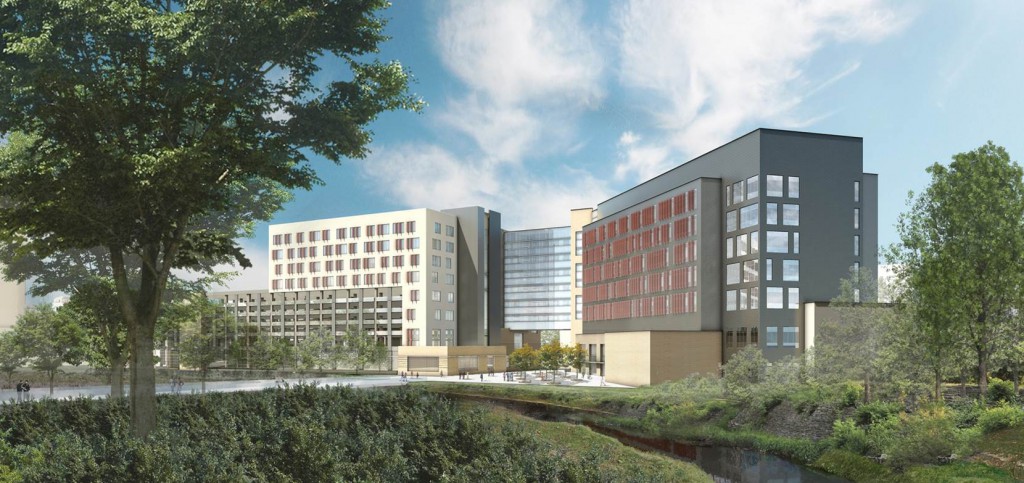
Image credit: UT News
In 2012, Travis County voters approved a medical bond package that provided the funds to create a new medical school. This was the first new medical school as part of a major public research university in roughly 50 years. This 2015 article in Fast Company by Evie Nagy describes the bold vision for the Dell Medical School at UT-Austin (DellMed). From the outset, the new medical school was designed to reinvent health care from the ground-up. In addition to the school’s intent to disrupt the medical industry, it has also been touted as the centerpiece of a new “innovation district” that would spark a wave of economic growth and urban development in Austin’s downtown area. When the global pharma company Merck announced in 2017 it would create a 600-person innovation hub that would be located adjacent to DellMed, that vision started to become a reality.
Downtown University Expansion #10:
Cornell Tech in NYC
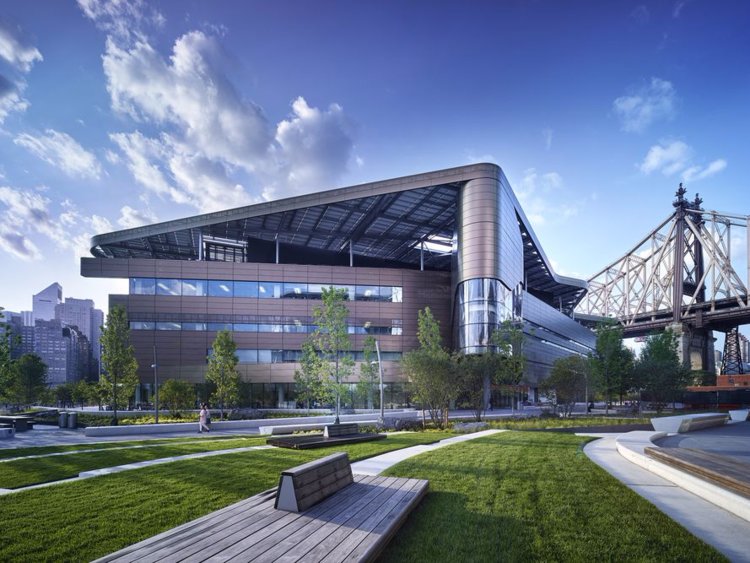
Okay, so Roosevelt Island (a small 2-mile long stretch of land in the East River between Manhattan and Queens) isn’t exactly downtown. But it is an urban district in need of transformation. In the past it has been home to housing projects, an insane asylum, a smallpox hospital, and it served as the setting for Dark Water, the 2005 horror flick starring Jennifer Connelly. As of 2017, the island became home to the beginnings of what promises to become one of the most high-tech urban university campuses in the world: Cornell Tech. This 2017 NYT article by Elizabeth A. Harris tells the story of how this campus came to be and what its ambitions are. In short, Cornell Tech aims to spark a Silicon Valley-esque tech and R&D scene in NYC through several new graduate programs focused on computer science and electrical and computer engineering.
Downtown University Expansion #11:
University of Wisconsin – Eau Claire
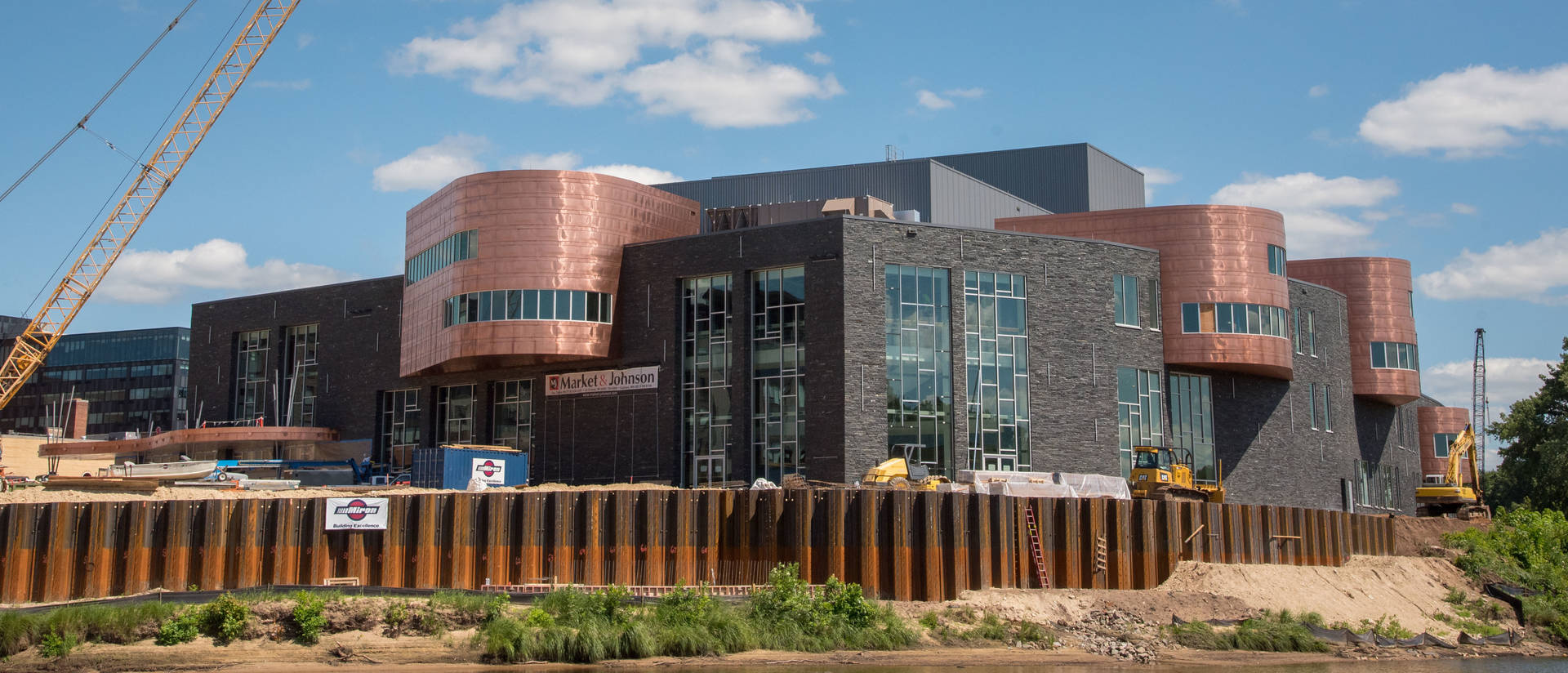
Image credit: UW Eau Claire
The University of Wisconsin-Eau Claire is located only about 1 mile from the city’s downtown. The relatively short distance between the university campus and the city’s downtown allows for development opportunities between the two districts. But that hasn’t stopped the university from expanding directly into the community’s CBD. The Pablo Center at the Confluence (photo above) is a $51 million concert and theater venue for the university and the community, located in the heart of downtown at the confluence of the Chippewa and Eau Claire Rivers. Adjacent to the Confluence project is the Haymarket Landing development which includes student housing for about 400 UW-Eau Claire students. The downtown investments by the university have helped stimulate private sector investment in the city’s urban core as well. Foxconn Technology Group announced a couple months ago it would open a 150-person tech hub in downtown Eau Claire. Foxconn’s announcement came on the heels of a similar announcement for downtown Green Bay in addition to its new North American HQ in downtown Milwaukee and its $10 billion manufacturing campus now under construction in Racine County in southeastern Wisconsin.
Downtown University Expansion #12:
University of Connecticut in Stamford
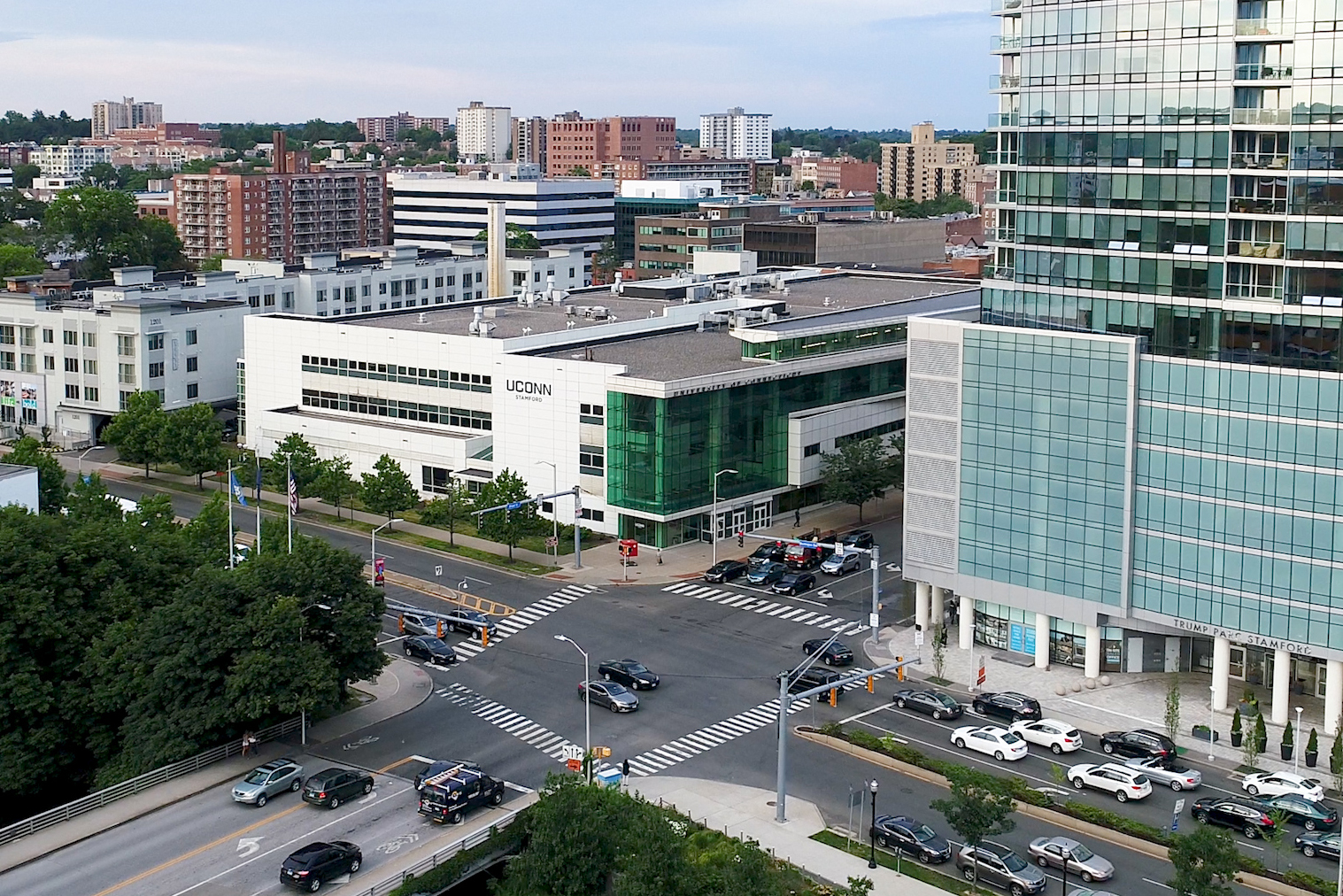
Image credit: Angelina Reyes/UConn Photo
There is a virtually insatiable demand for downtown housing options in cities across the US. The desire to live in an authentic urban location seems to hold true not just for the private real estate market, but for student housing as well. UConn Stamford opened its downtown campus in 1998 and embarked on a development to add a 116-unit student housing development that opened its doors in 2017. Demand from UConn students has been so strong that the university is now planning to add another 120 units by partnering with apartment owners of surrounding rental properties.
Downtown University Expansion #13:
UConn Hartford
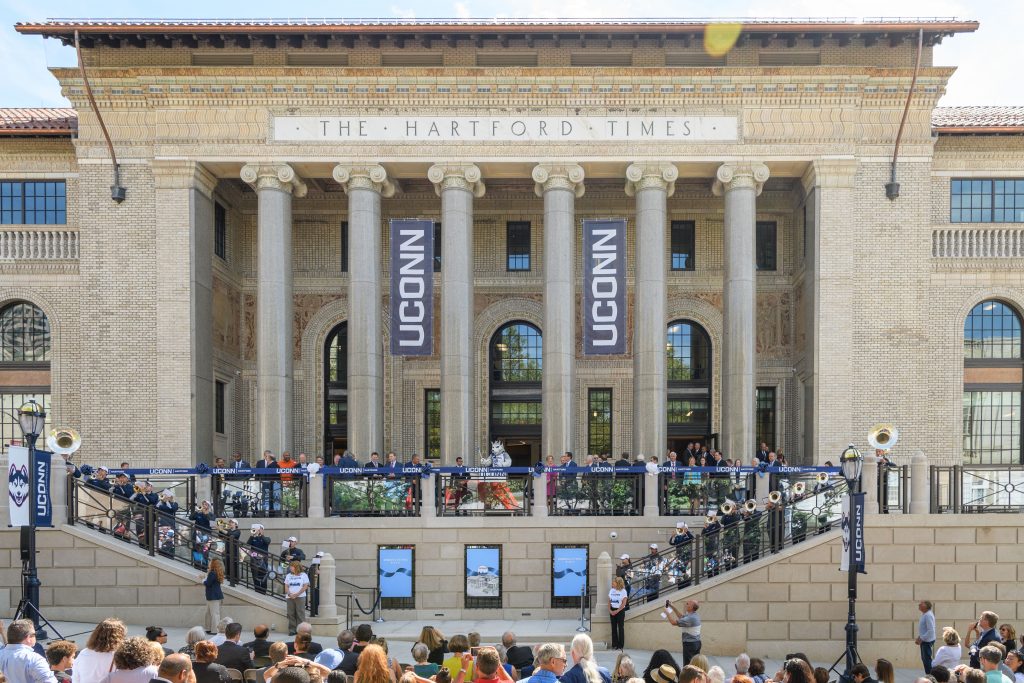
Image credit: Peter Morenus, UConn Photo
Stamford isn’t the only city in Connecticut to receive a downtown UConn campus. In 2017, UConn Hartford opened its doors to 2,300 students after 20 years of dreaming, planning, and visioning. The $140 million investment in the new 5-building campus in downtown Hartford is being touted as the biggest economic win and redevelopment project for Hartford in over a decade.
Downtown University Expansion #14:
University of Oregon in Portland
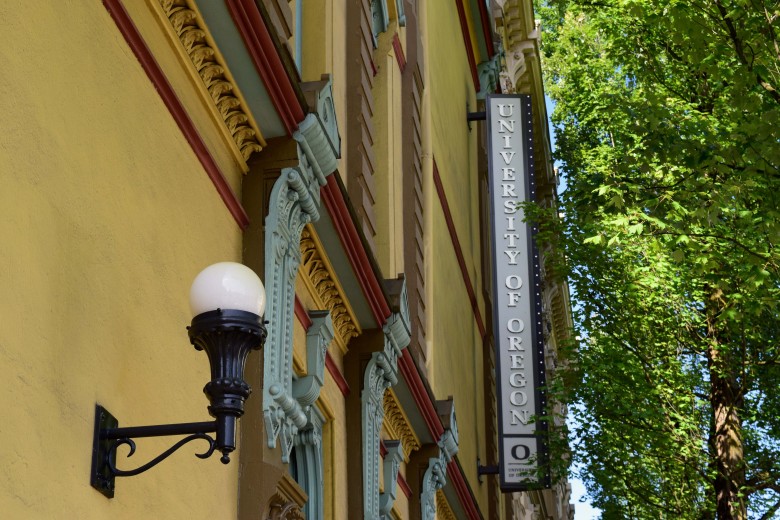
Image credit: UO Portland
The main campus of the University of Oregon is in Eugene, 100 miles south of Portland, Oregon’s largest city. Portland State University has its campus in the heart of downtown Portland, making it one of the most urban university campuses in the US. But 10 years ago, the University of Oregon saw an opportunity to make a big investment in downtown Portland, with the consolidation of several Portland programs in the historic White Stag Block. The facility houses a range of programs in architecture, law, business and journalism, and serves as a highly visible knowledge center in downtown Portland.
Downtown University Expansion #15:
Mississippi State University – Meridian
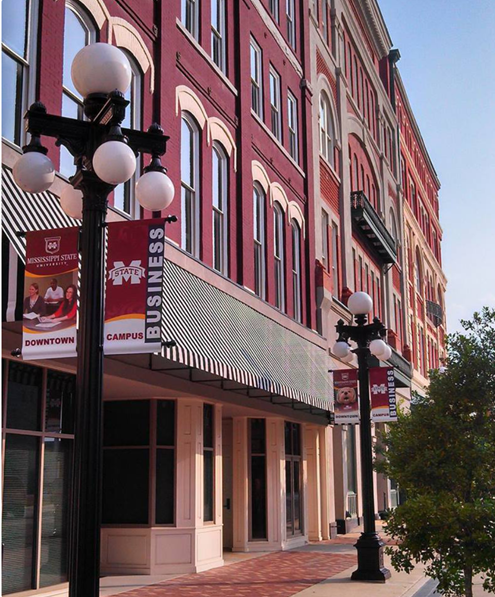
Image credit: MSU Meridian
Mississippi State University’s flagship campus is in Starkville, but the university also operates an urban campus 75 miles to the south in downtown Meridian. The MSU Meridian downtown campus includes three separate facilities, the Riley Center (a performing arts facility and Grand Opera House), the Deen Building (pictured above) which houses the university’s Division of Business, and most recently–thanks to an $11 million grant from the Riley Foundation–the Rosenbaum Building, which will house the university’s kinesiology program.
Downtown University Expansion #16:
University of Minnesota – Rochester
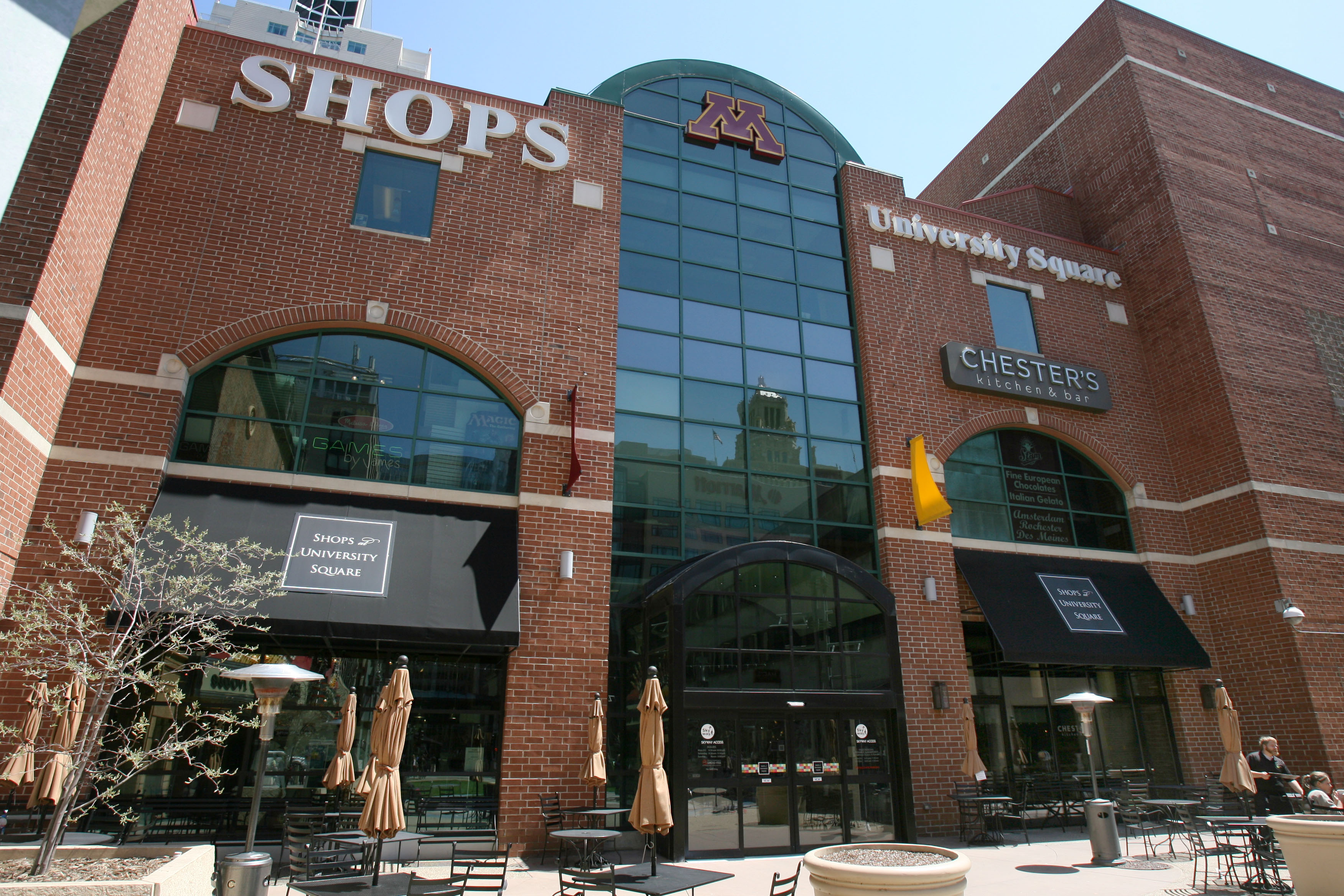
Image credit: Alex Kolyer, Minnesota Public Radio
Rochester, Minnesota is known for being home to the world-class Mayo Clinic, but it did not have its own University of Minnesota campus until very recently. Initially established in 2006, the downtown campus graduated its first class of undergraduate students in 2013. The campus is focused on health sciences, leveraging its proximity to the Mayo Clinic. UMN Rochester now has a new chancellor, Dr. Lori Carrell, that is poised to continue moving the campus forward with a plan for growth over the next several years.
Downtown University Expansion #17:
University of Memphis Law School
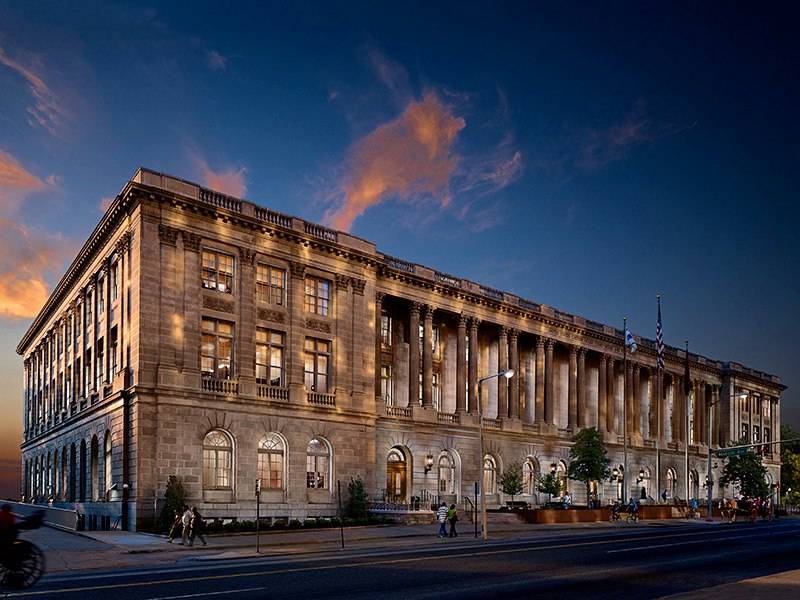
Image credit: University of Memphis
The University of Memphis Cecil C. Humphreys School of Law was established in 1962, but moved into its current downtown home in 2010. It took $42 million to renovate the 169,000 square feet building into a modern law school. The impressive building was originally built in the 1880s and has been operated as a US Custom House, Court House, and Post Office before its higher education conversion. In addition to its positive role in efforts to rejuvenate downtown Memphis, the law school is a strong visual bookend at the end of Madison Avenue on the western edge of downtown for travelers heading toward downtown from the rest of the city.
Downtown University Expansion #18:
UMass Center in Springfield
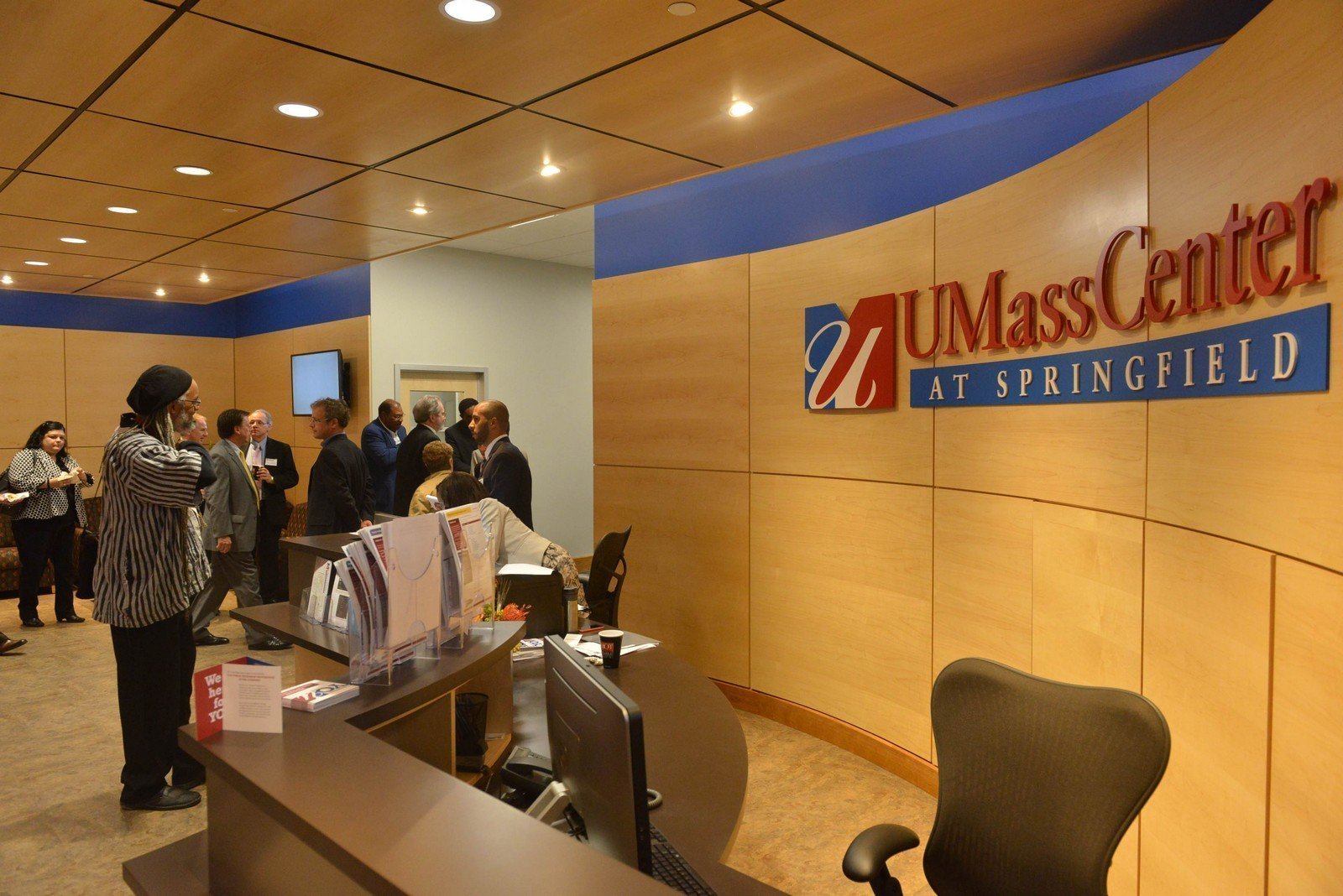
Image credit: John Suchocki, The Republican
The University of Massachusetts opened its UMass Center in downtown Springfield in 2014. Since opening, the student enrollment has grown from 250 to nearly 1,000. Springfield’s economic development leaders are excited about the potential of this higher education expansion to benefit the region’s economy. Richard K. Sullivan Jr., president and CEO of the Economic Development Council of Western Massachusetts (whose office happens to be located adjacent to UMass Center), describes the new facility as ” a momentum changer” for downtown Springfield. “It’s a big statement from higher education, saying that this is the place to be,” Sullivan said. “On a practical level, having hundreds of students in downtown creates foot traffic and retail momentum,” Sullivan said. “And, that younger population brings a vitality to downtown.” Springfield Mayor Domenic J. Sarno agrees with Sullivan Jr. “It is a boost to the psyche, morale and image of our city, because the naysayers said it would never happen,” Sarno said. “Specifically, it’s brought the eclectic mix I’m looking for in our downtown, driving not only higher education options such as STEM and cybersecurity, but it’s been a catalyst for innovation-entrepreneur district, young professionals, arts, culture, (New England Public Radio) and bringing new-found life to our Tower Square to name a few.”
Downtown University Expansion #19:
Delta College in downtown Saginaw
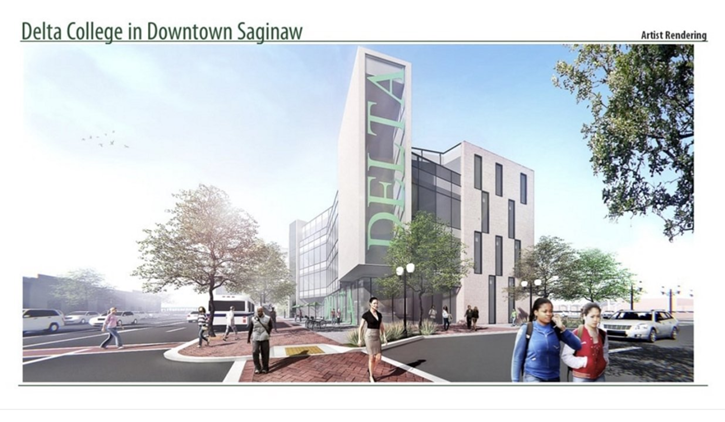
Image credit: Delta College
Delta College is the regional community college serving three separate metropolitan areas in East Central Michigan: Saginaw, Midland, and Bay City. The main campus sits on 640 acres in a “middle ground” location between the three cities, adjacent to Saginaw Valley State University. Several years ago, Delta College leaders decided to open a satellite campus in downtown Saginaw to help revitalize the struggling urban district and to provide an urban alternative for students. In 2016, a site in downtown Saginaw was selected and the State of Michigan authorized funding to move forward with the new campus, which is now well under construction and set to open its doors to 1,100 students in 2019.
Downtown University Expansion #20:
High Point University
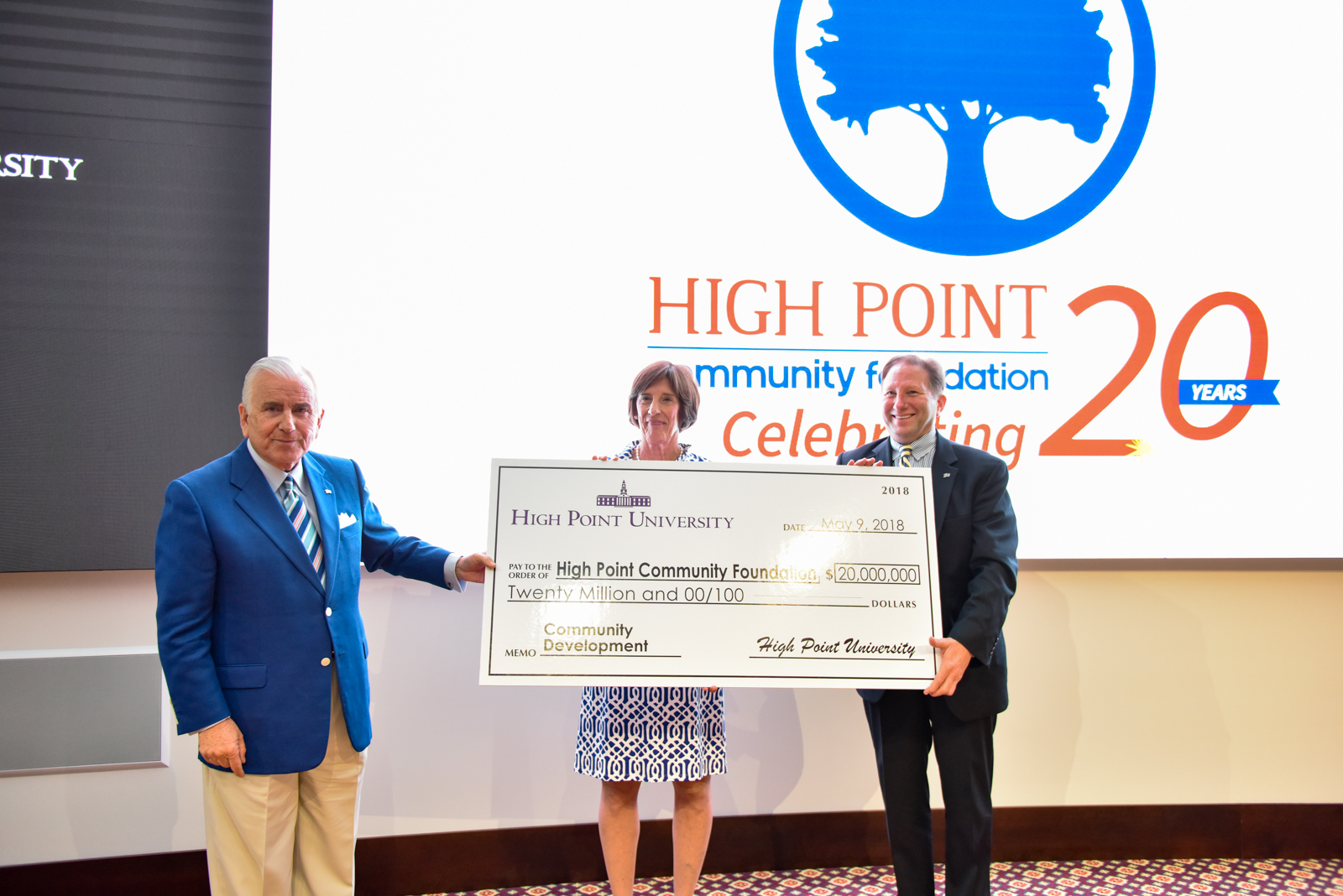
Image credit: High Point University
There is no question universities are key players in supporting regional economic development through their innovation, research, and talent development efforts. And we’ve highlighted numerous examples in this blog post of how universities are working to stimulate urban redevelopment in downtown districts. By developing downtown campuses that bring in thousands of students, faculty, and staff into an urban core, universities can make a big difference in transforming a downtown. But how often does a university lead the way in a downtown revitalization strategy simply by funding a bunch of non-higher education projects? That’s exactly what High Point University’s leadership is doing in High Point, North Carolina. In May 2018, the University’s Board of Regents approved a $20 million investment to the High Point Community Foundation that will fund several downtown revitalization projects including: a children’s museum, Lego Center, events center, and community park. High Point University president Dr. Nido Qubein has also helped raise tens of millions of dollars from the private sector to support catalyst projects in downtown High Point. These funds are working in concert with public investments in a new multi-use stadium that will anchor a district to include a 120-room hotel, two office buildings, 30,000 square feet of retail space, a 120-unit apartment building, and parking facilities.
Bottom Line
This is by no means every downtown higher education expansion in the US…there are plenty of additional examples out there. You may also notice I focused on downtown university campuses, but you can find similar stories of community colleges in downtowns, higher education research & innovation centers, and other relevant examples. But the main takeaway is: Don’t underestimate the potential of leveraging your region’s higher education institutions as a catalyst for downtown transformations.
What are your favorite downtown higher education expansion projects?




Adding further support to your Urban Scale Blog about the benefits of university expansions in their downtowns: in a prediction of further expansions, the president of the University of Texas at San Antonio (UTSA) just recently announced the construction of two new buildings in its downtown campus. One is a $33 million, 80 thousand square foot center for cyber-security research, and the other is a $57 million, 138 thousand square foot hub that consolidates existing cyber-tech programs. Major reasons for these moves to the urban center according to officials: “The closer you put people together…the faster innovation happens”, and “…those that are situated within an urban environment will have the best chance for that.”
Yes, thank you for pointing this out! The recent announcement for UTSA’s downtown campus is big news for San Antonio. And how funny…the timing of the announcement happened just hours after this blog post was published!
By placing together in close proximity diverse populations that may not traditionally be combined, this enhances the possibilities for a more vibrant and innovative downtown experience shared by all — a real win-win situation good for education, the economy, community.
Great point…You could almost argue that if a downtown is LACKING higher education, it is really deficient of an important source of diversity and energy.